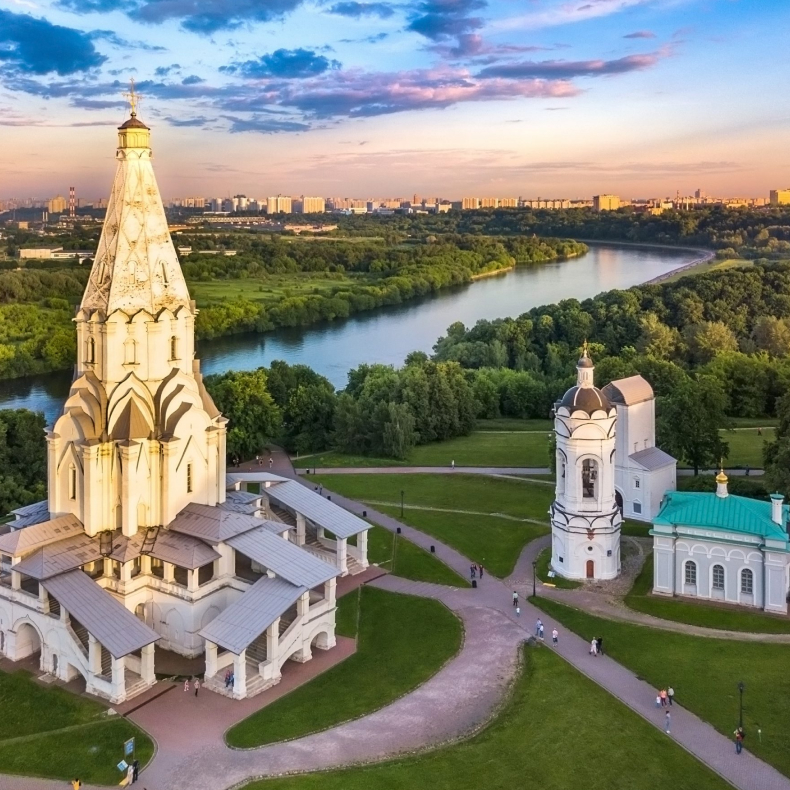On August 29, the Russian House in Brussels and the Moscow State United Museum-Reserve “Kolomenskoye” invite you to the virtual tour “Kolomenskoye 100: History, Monuments, Museum.”
Kolomenskoye is one of the oldest inhabited places in modern Moscow. Archaeological monuments in its surroundings indicate the presence of people from the Stone Age (5th–3rd millennium BC). In the 1st millennium BC, numerous unfortified settlements (“selyshcha”) of the ancient Finno-Ugric tribe appeared on the banks of the Moscow River and its tributaries, in the area of the future villages of Dyakovo and Kolomenskoye.
The oldest monument of the Tsar’s Court in Kolomenskoye, the Church of the Ascension of the Lord, was first mentioned in 1532. According to legend, the church was built to commemorate the birth of Vasily III’s heir, the future Tsar Ivan IV the Terrible. By the 16th century, when Kolomenskoye had become a grand princely residence, the St. George Bell Tower next to the Church of the Ascension and the Church of the Beheading of John the Baptist in Dyakovo were erected. The most common hypothesis links the construction of the church to the coronation of Ivan IV in the winter of 1547.
The heyday of Kolomenskoye is associated with the reign of Alexei Mikhailovich—it was his favorite residence. In 1667-1668, he built a magnificent wooden palace with 260 rooms. Simeon Polotsky called the Kolomenskoye Palace the “eighth wonder”, meaning the eighth wonder of the world.
During the reign of Catherine II, the dilapidated palace was dismantled. A new four-story palace was built by P.V. Makulov in 1766-1767 on a new site—opposite the northern facade of the Church of the Ascension.
A new chapter in the history of the estate began in the 20th century: in 1923, a museum was founded in Kolomenskoye. The initiator of its creation and first director was architect and restorer Pyotr Dmitrievich Baranovsky. He began collecting the museum’s collection and organized several expeditions to the north of the country. He also created the first exhibitions, personally welcomed guests, and conducted tours.
In 2023, the museum celebrated its 100th anniversary.
Language: Russian/French



